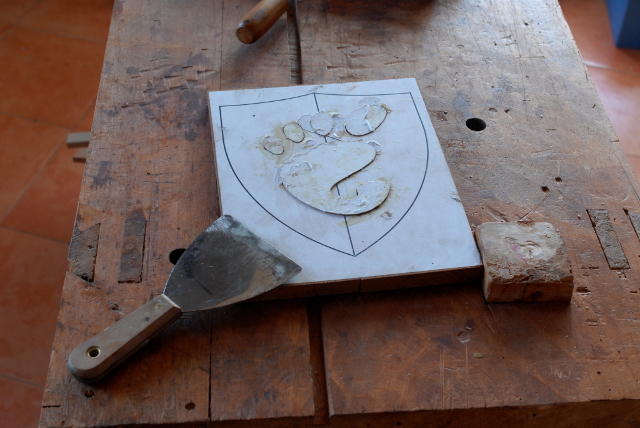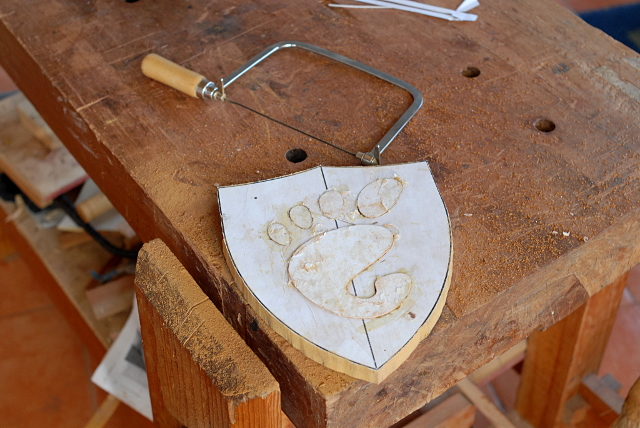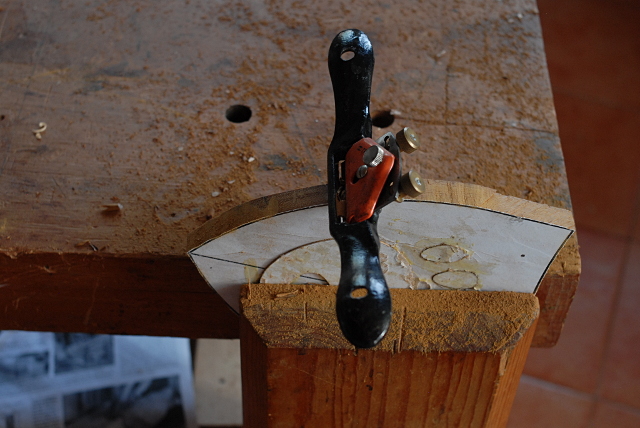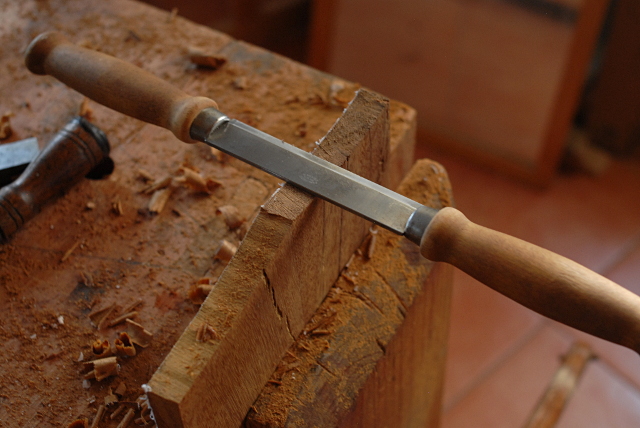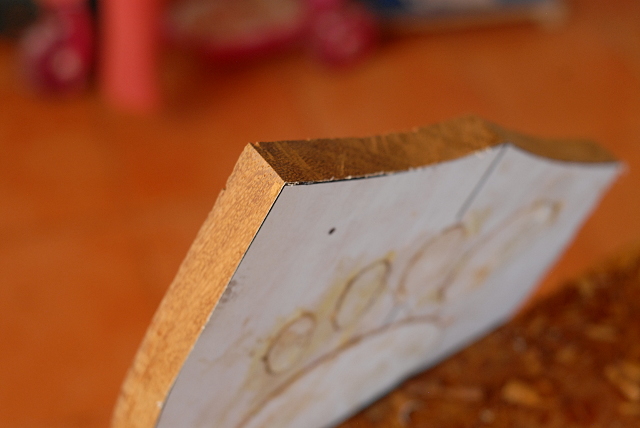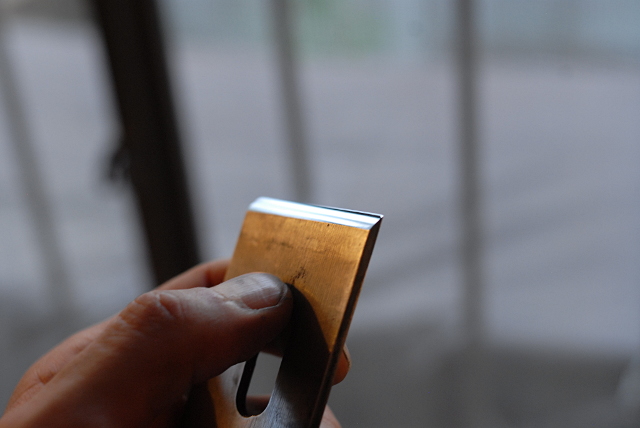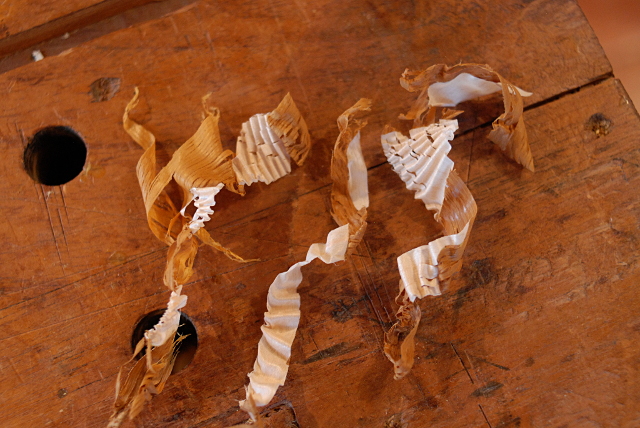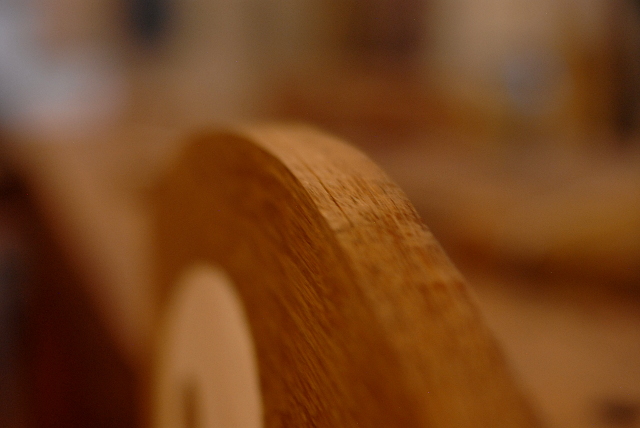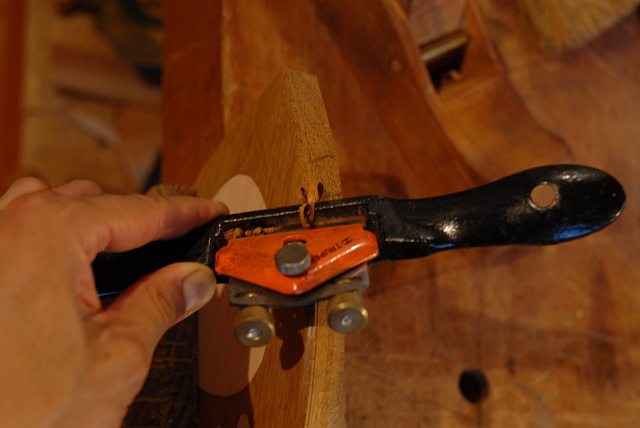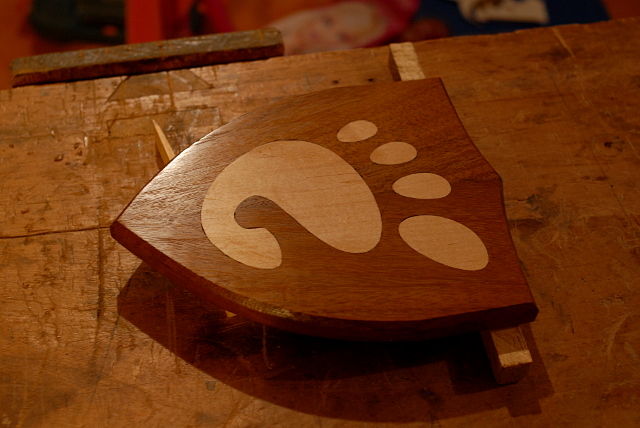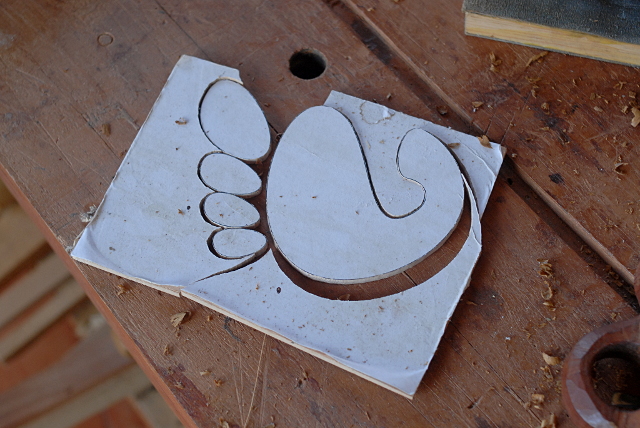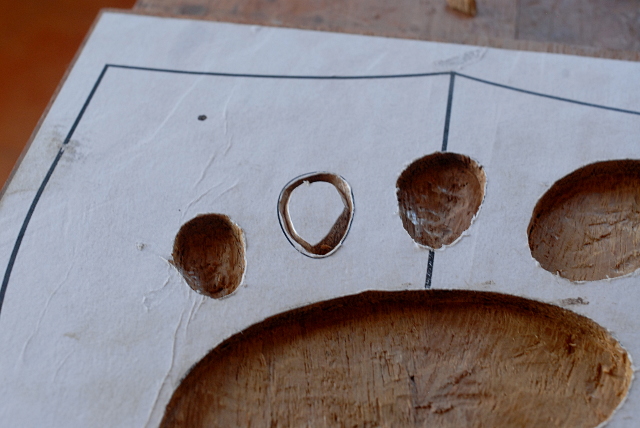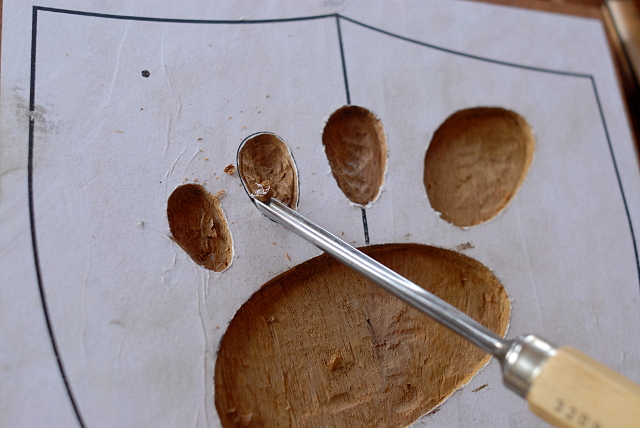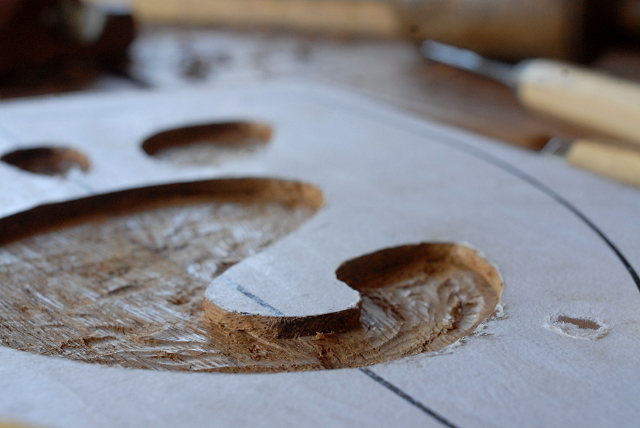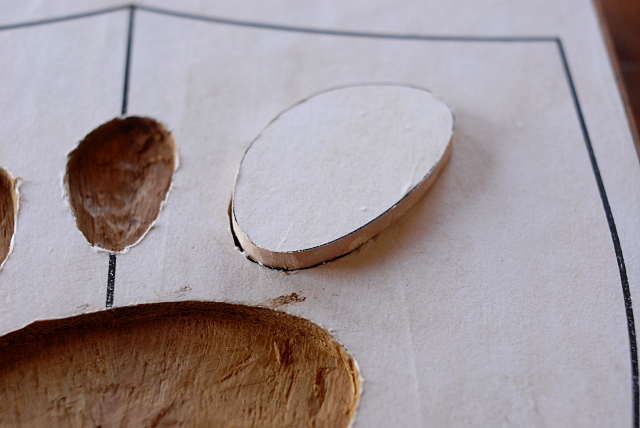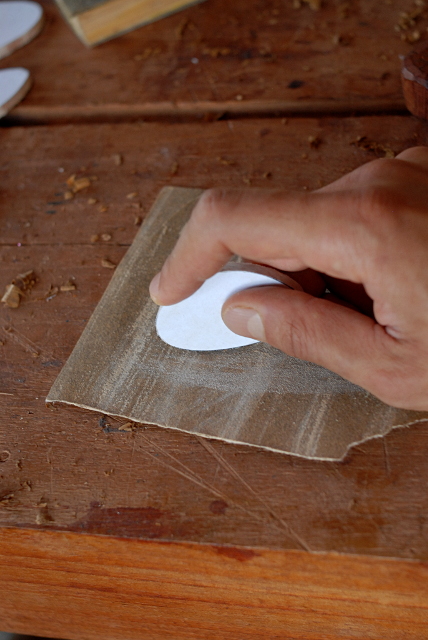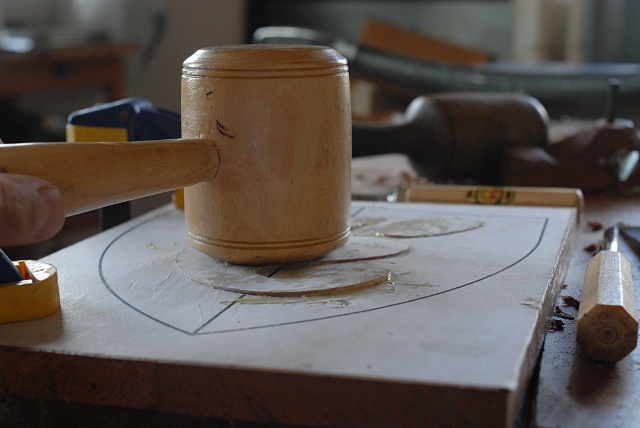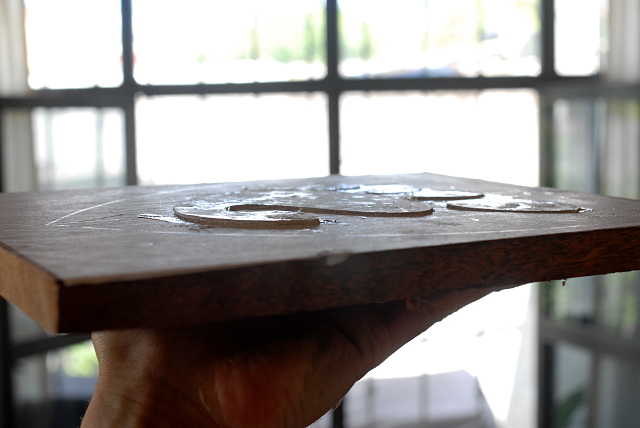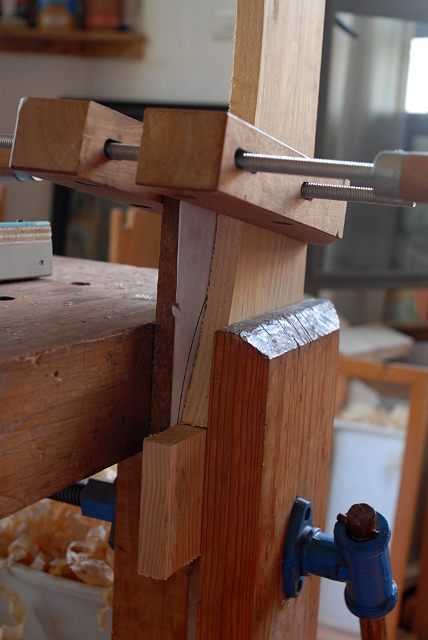-
I've been making a little map of things in Göteborg, for GUADEC. The red markers are for the main venue (Folkets Hus) and the site of the BOFs (IT University). There's a ferry line to get from near Folkets Hus to the IT Univerisy. The orange marker is the Liseberg amusement park where the roller coasters are. The blue markers are some hotels.
-
This is the shield right after it came out of the clamps. I had to pry it a bit from the clamped board with a spatula.
I cut out the shield shape by first sawing the straight sections, and then using a coping saw on the curved ones.
I used a spokeshave to smooth the convex curves on the sides.
The curves on the top are concave, and the spokeshave doesn't fit. I used a drawknife for those.
This gives us crisp corners and smooth curves throughout.
On to planing the face flat! I sharpened my plane irons...
... and planed carefully. The cutoff from the top of the shield was useful as a support against the planing stop.
The foot shows through once the paper is planed away...
Check out the dual-color shavings!
And we have a flat board once again. That smudge at the top of the sole is from my dirty fingers — dirty with metal dust from the sharpening step — so I washed my hands and planed the dirt away.
But it is too flat. So, I scribed a line all around the front and edges, and used the spokeshave and drawknife again to get a 45-degree bevel around the shield. The line is a bit hard to see in the first photo, but it's there.
Here is the first coat of boiled linseed oil after sanding. When it dries I'll add some coats of shellac.
-
In the last part, I glued the paper templates for the shield and foot onto the wood. Now comes the part that is hardest for me: excavating the foot pieces in the dark wood so the light-colored ones can fit in them. I'm not a woodcarver, just a lousy joiner, and I have a lot to learn!
The first part is not a problem: use a coping saw to separate the foot pieces.
Next, for each part of the foot, I started with a V-gouge to make an outline that will work as a stop cut. Inside this shape, I used a curved gouge to excavate the wood. The stop cut prevents the gouge from going past the outline. Finally, I used the curved gouge to get as close as possible to the final line.
Each wall needs squaring up, as the curved gouge leaves a chamfered edge instead of a crisp angle. I used the V-gouge around each shape so that one of the edges of the gouge remains vertical. I cleaned up the bottom with a combination of chisels and a router plane where it fits.
Then, each piece needs to be adjusted to fit. I sanded the edges to have a nice curve instead of the raw edges from the coping saw. Then I put a back bevel on each piece, using a carving knife, so the back part will be narrower than the front. I had to also tweak the walls in the dark wood in some places.
After a lot of fiddling, the pieces fit — with a little persuasion — and they can be glued. When the glue dries I'll plane them down so that they are level to the dark wood.
Finally, I clamped everything against another board to distribute the pressure. Let's hope for the best.
-
Today I was asking around something like, mobile websites work without Flash; how come non-mobile Twitter and YouTube want Flash on my desktop (which is disabled now because of all the 0-day exploits?
Elad kindly told me that if I install the GStreamer codecs, and disable Flash, it should work. I didn't have those codecs on my not-for-watching-TV machine, so I set to it.
openSUSE cannot distribute the codecs themselves, so the community does it with an external, convenient one-click-install web-button. When you click it, the packaging machinery churns and you get asked if you want to trust the Packman repository — where all the good non-default stuff packages are.
It's plain HTTP. No HSTS or anything. It tells you the fingerprint of the repository's signing key... over plain HTTP. On the FAQ page, there is a link to download that public key over plain FTP.
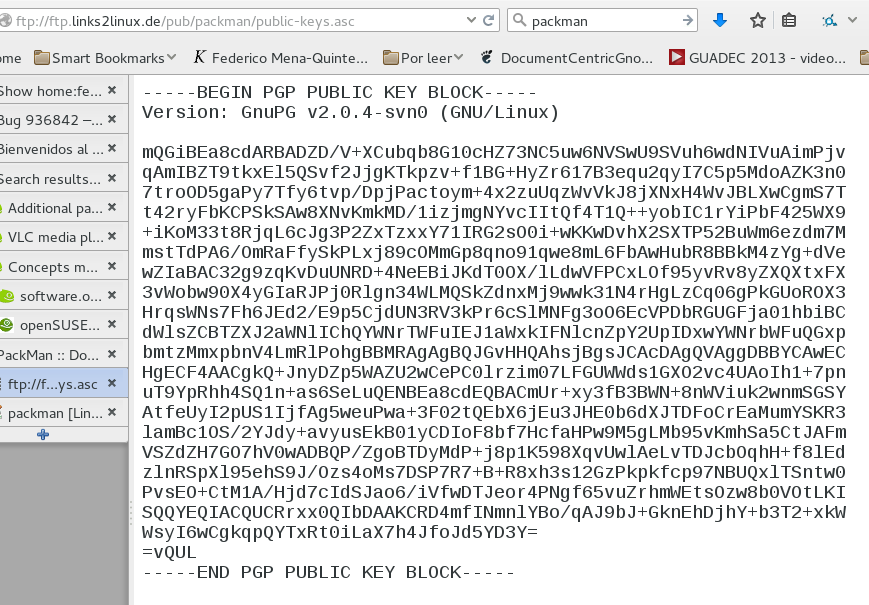
Now, that key is the "PackMan Build Service" key, a key from 2007 with only 1024-bit DSA. The key is not signed by anybody.
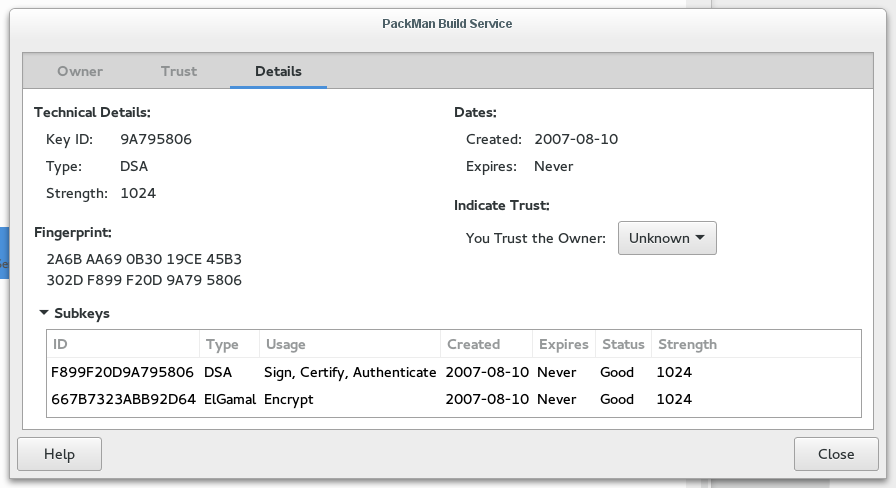
However, the key that the one-click install wants to use is another one, the main PackMan Project key.

It has three signatures, but when I went down the rabbit hole of fetching each of those keys to see if I knew those people — I have heard of two of them, but my little web of trust doesn't have them.
So, YOLO, right? "Accept". "Trust". Because "Cancel" is the only other option.
The installation churns some more, and it gives me this:
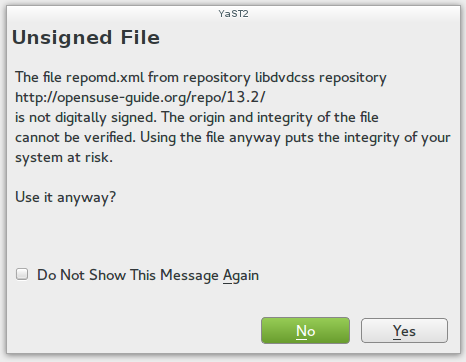
YOLO all the way.
I'm just saying, that if you wanted to pwn people who install codecs, there are many awesome places here to do it.
But anyway. After uninstalling flash-player, flash-player-gnome, freshplayerplugin, pullin-flash-player, the HTML5 video player works in Firefox and my fat desktop now feels as modern as my phone.
Update:Hubert Figuière has an add-on for Firefox that will replace embedded Flash video players in other websites with HTML5, the No-flash add-on.
